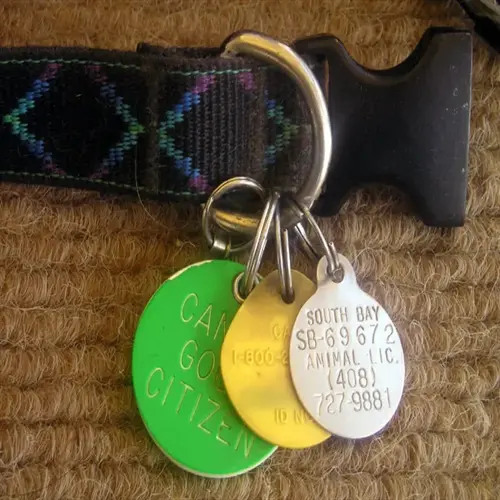10 Must-Have Pet Grooming Tools for Pros

Written by
Robert Brown
Reviewed by
Prof. Henry Webster, Ph.D.Groomer-specific pet grooming tools are the safest and most efficient tools for all types of grooming.
Budget starter kits will likely provide the necessary tools for the cost savings of 30-40% up to purchasing these individual tools.
Regular maintenance extends the life of your grooming tools and decreases the chance of injuries to your pet during a grooming session.
Selecting tools-specific to coat types will ensure optimal results and no skin or coat damage.
The ten grooming tools that are essential includes clippers, shears specific for grooming, dryers, and dematting combs specifically for professional groomers.
Correct tool use will also squash misconception about using human shampoo being safe for pet skin and not using a cage dryer.
Article Navigation
Excellent grooming tools for pets make all the difference in your furry friends' health and happiness. In my 15 years as a professional groomer, I have seen how the right equipment eliminates many of the causes of skin irritation and reduces the stress of the pets during the grooming process. Every pet owner is entitled to see their pet comfortable and looking its best.
Investing in quality gear frees up more time and protects your dog. Sharp blades mean less time spent making multiple passes over sensitive skin. Non-slip handles help you to maintain control while finishing tricky trims. Whether you're grooming professionally or at home, having good grooming tools allows stressful grooming sessions to become bonding moments spent with your pet.
You can achieve professional-looking results at home without anything expensive or a salon visit . All it takes are three essentials: a slicker brush for regular grooming, scissors with rounded tips for safety, and a shampoo made for pets. I instruct both salon groomers and home beginners on obtaining better results.
Budget-Friendly Alternatives
Value brands like Wahl Essentials and Groomers Pro provide professional results without the premium costs. I have used them both in our salon temporarily when we have run out of clippers, etc., and in my home grooming kits. Their clippers perform nearly as well as clippers that cost twice as much. Starter kits offer the essentials of grooming, providing a 30% discount over purchasing individual tools.
Determine the real cost savings by the cost per use. A 40-dollar starter kit used each week costs mere pennies per use. Compare that to salon visits that cost 60 dollars each. A smart purchase pays off quickly. Focus on tools that come with a good warranty to protect your long-term investment.
Safe and cost-saving DIY solutions help reduce costs even further. Mix 1 part vinegar with 3 parts water as a gentle ear cleaner. For calming sprays, mix 10 drops of lavender oil in 1 cup of distilled water. Always patch test homemade products behind your pet's ear first before using, to check for possible reactions.
Affordability does not equate to a lack of quality. My favorite budget clippers lasted me 5 years with normal maintenance. Look for stainless steel blades and a no-slip grip. Avoid purchasing clippers with cheap plastic parts that can break off during grooming. Smart choices can save money, and most importantly, your pets.
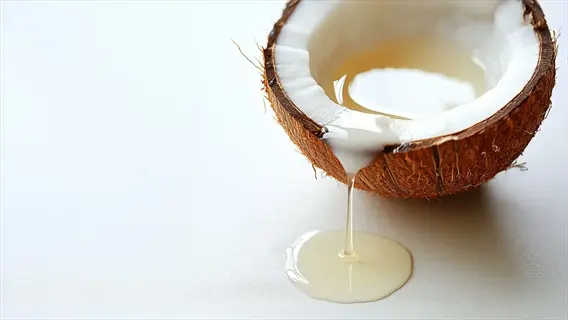
Coconut Oil Detangler
- Formula: Combine two tablespoons of coconut oil with one cup (240 ml) of warm water in a spray bottle
- Application: Mist directly onto tangled areas before gently brushing through the coat with a slicker brush
- Benefits: Provides natural moisturization without harsh chemicals commonly found in commercial detangling products
- Storage: Refrigerate mixture and use within fourteen days to prevent bacterial growth and maintain freshness
- Caution: Always perform a small patch test before full application and carefully avoid contact with the eyes
- Cost Analysis: Costs approximately $0.25 per application compared to $15 for similar store-bought alternatives

Vinegar Ear Cleaner
- Formula: Mix one part apple cider vinegar with three parts distilled water (e.g., 50 ml vinegar to 150 ml water)
- Application: Saturate cotton balls with solution and gently wipe the outer ear area once every seven days
- Benefits: Naturally balances ear pH levels to prevent yeast infections and reduce unpleasant ear odors
- Storage: Keep at room temperature in a dark glass bottle and shake well before each application session
- Caution: Never pour liquid directly into the ear canal to avoid causing discomfort or potential damage
- Cost Analysis: Approximately $0.10 per use versus $12 for equivalent veterinary-recommended ear cleaners
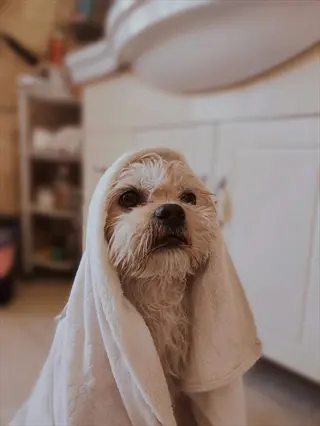
Oatmeal Bath
- Formula: Grind one cup (240 ml) of plain oatmeal into powder and dissolve in 5 liters of warm water
- Application: Allow pet to soak for ten minutes during bath time to soothe irritated skin and loosen dirt
- Benefits: Provides relief for itching caused by seasonal allergies or dry skin conditions naturally
- Storage: Prepare immediately before use since the mixture loses effectiveness if stored for later
- Caution: Maintain water temperature at 37°C (98°F) to prevent thermal discomfort or accidental scalding
- Cost Analysis: Costs $0.50 per treatment compared to $20 for specialized medicated oatmeal shampoos
Baking Soda Deodorizer
- Formula: Combine one-quarter cup (60 ml) baking soda with one cup (240 ml) of cornstarch in a shaker
- Application: Sprinkle mixture evenly across the coat and thoroughly brush through before bathing
- Benefits: Absorbs stubborn pet odors effectively without using artificial perfumes or alcohol-based products
- Storage: Store in an airtight container away from moisture to maintain effectiveness for six months
- Caution: Use only in well-ventilated areas to prevent inhalation of fine powder particles during application
- Cost Analysis: Approximately $0.15 per application versus $18 for premium commercial deodorizing sprays
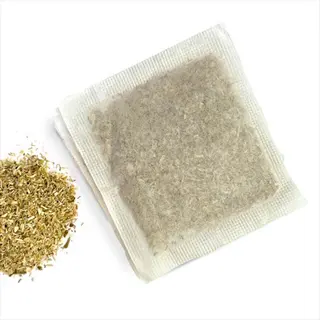
Chamomile Eye Wash
- Formula: Steep two chamomile tea bags in one cup (240 ml) of boiled water cooled to room temperature
- Application: Apply with soft cotton pads to gently clean around eyes and reduce tear staining naturally
- Benefits: Soothes irritated skin with anti-inflammatory properties while being gentle on sensitive areas
- Storage: Refrigerate unused portion and discard after forty-eight hours to prevent bacterial contamination
- Caution: Test temperature on your wrist before application and avoid direct contact with the eyeball
- Cost Analysis: Costs $0.30 per use compared to $15 for specialized tear stain removal products
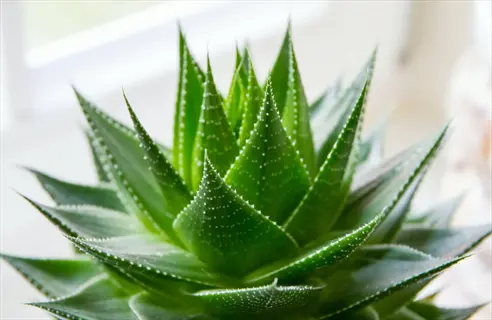
Aloe Paw Balm
- Formula: Mix two tablespoons of pure aloe vera gel with one tablespoon of olive oil and beeswax
- Application: Massage gently onto cracked paw pads after cleaning and drying the feet completely
- Benefits: Heals dryness while forming a protective barrier against harsh surfaces and weather conditions
- Storage: Keep in a cool dark place and use within three months to maintain maximum effectiveness
- Caution: Verify aloe product contains no additives or alcohol which could cause stinging or irritation
- Cost Analysis: Approximately $0.40 per application versus $25 for veterinary-grade paw protection balms
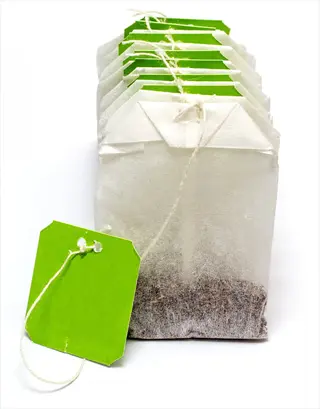
Green Tea Spray
- Formula: Brew three green tea bags in two cups (480 ml) of water and cool completely before use
- Application: Spray onto skin hotspots to reduce inflammation and promote healing between grooming sessions
- Benefits: Contains antioxidants that soothe irritated skin and accelerate natural healing processes safely
- Storage: Refrigerate in a spray bottle and discard if cloudiness or unusual odor develops after one week
- Caution: Avoid application on open wounds or raw skin without prior veterinary consultation and approval
- Cost Analysis: Costs $0.20 per use compared to $18 for medicated anti-itch sprays from pet retailers
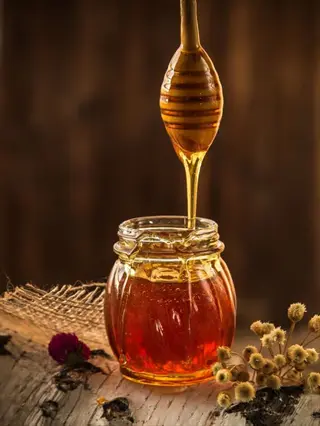
Honey Paw Treatment
- Formula: Combine one tablespoon of raw honey with two tablespoons of melted coconut oil and shea butter
- Application: Apply thin layer to damaged paw pads and cover with breathable sock for thirty minutes
- Benefits: Natural antibacterial properties promote healing while moisturizing severely dry or cracked pads
- Storage: Keep mixture in an airtight container at room temperature for up to two months maximum
- Caution: Use only 100% pure honey without additives which could cause adverse reactions or stickiness
- Cost Analysis: Approximately $0.35 per treatment versus $22 for specialty paw repair products
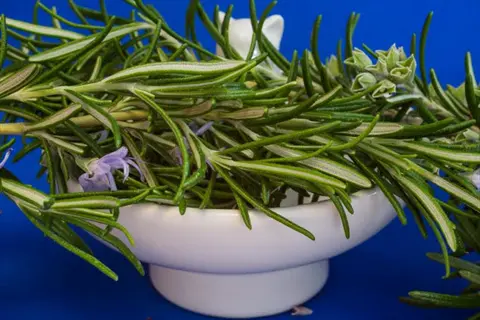
Rosemary Rinse
- Formula: Simmer half cup (120 ml) fresh rosemary in two cups (480 ml) water for twenty minutes then strain
- Application: Use as final rinse after shampooing to enhance shine and repel fleas naturally
- Benefits: Adds natural luster to coats while providing gentle flea prevention without harsh pesticides
- Storage: Refrigerate liquid and use within seven days for maximum effectiveness and freshness retention
- Caution: Avoid contact with eyes and discontinue use if skin irritation or redness occurs unexpectedly
- Cost Analysis: Costs $0.15 per rinse compared to $16 for commercial coat-enhancing finishing products
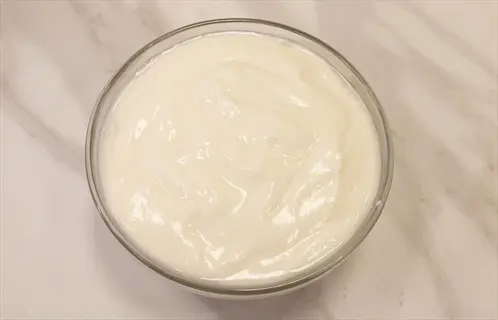
Yogurt Paw Soak
- Formula: Mix half cup (120 ml) plain unsweetened yogurt with two tablespoons of oatmeal and warm water
- Application: Soak paws for five minutes to relieve itching then rinse thoroughly with clean water
- Benefits: Probiotics soothe inflammation while natural enzymes gently clean between paw pads and toes
- Storage: Prepare immediately before use since dairy products spoil quickly at room temperature
- Caution: Use only plain yogurt without sweeteners or flavors which could attract licking and ingestion
- Cost Analysis: Approximately $0.30 per soak versus $24 for specialized paw-cleaning foams and solutions
Calming Anxious Pets
It's essential to apply relaxation aids specifically to your pet's stress triggers. For noise sensitivity, consider sound muffling capes. For handling anxiety, use wrapping pressure formulas. For separation anxiety, long-lasting chews improve behavior. I sort remedies by the cause of the stress, as general approaches often fail with anxious pets.
A good fit prevents safety problems for hoods and muzzles. Measure snout girth and neck circumference, adding two inches for comfort. Hoods are best suited for animals under 25 lbs. Choose basket-type muzzles for larger dogs that allow them to pant. Badly fitting equipment may cause panic and defeat the intended end.
Pheromone sprays act sooner than treats, but do not last as long. The spray calms pets within 15 minutes, but wears off in two hours. The treat will take 45 minutes to become active, but will calm for four hours. Together, they give the best results for something stressful, such as a vet visit. Start with the spray, then the treats.
Gradual desensitization builds tolerance before grooming days. Play clipper sounds softly during meals, gradually increasing the volume each week. Give paw pats daily without touching toes or turning on clippers. Introduce grooming tools without turning them on. It takes time, but positive associations lead to smoother grooming sessions.
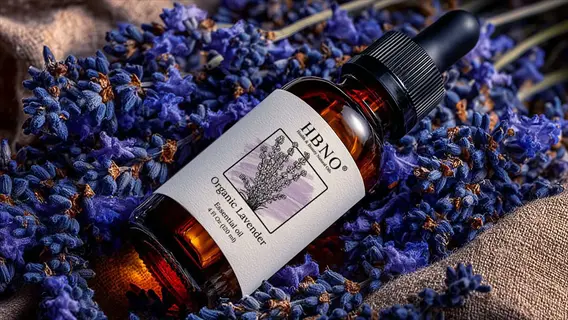
Lavender Spray
- Formula: Mix 10 drops lavender oil with 1 cup (240 ml) distilled water in spray bottle
- Application: Mist lightly on bandana 30 minutes before grooming session begins
- Benefits: Natural sedative properties reduce nervous panting and trembling
- Storage: Keep in dark cool place for 3-month shelf life away from direct sunlight
- Caution: Avoid contact with eyes and ensure proper ventilation during application
- Cost Analysis: $0.50 per application versus $25 commercial calming sprays
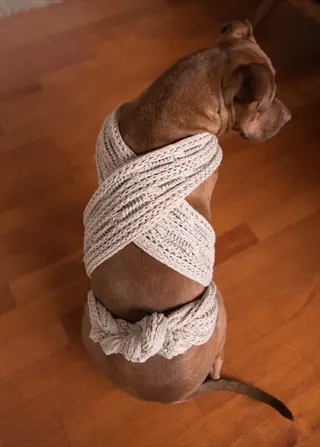
Pressure Wrap
- Materials: Stretchy fabric measuring 1.5x pet's chest circumference
- Application: Snugly wrap around torso providing gentle constant pressure
- Benefits: Mimics swaddling effect to lower heart rate during handling
- Adjustment: Allow 10-minute trial before grooming to ensure comfort
- Caution: Monitor breathing and remove if pet shows overheating signs
- Cost Analysis: $5 homemade versus $40 retail versions

Chamomile Treats
- Formula: Steep 2 tbsp dried chamomile in ½ cup (120 ml) water, mix with pumpkin puree
- Application: Feed 1 tsp (5 ml) per 10 lbs (4.5 kg) body weight 45 minutes before grooming
- Benefits: Mild relaxant for stomach and nervous system without drowsiness
- Storage: Freeze in ice cube trays and thaw as needed for 2-month use
- Caution: Confirm no ragweed allergy and limit to 3 times weekly maximum
- Cost Analysis: $0.20 per dose versus $1.50 commercial calming chews
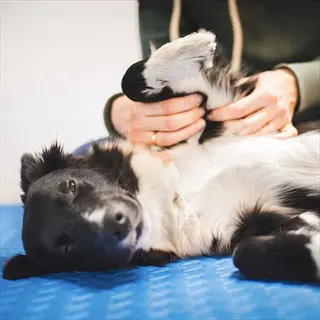
Acupressure Mat
- Materials: Rubber bath mat with rounded nubs and removable fabric cover
- Application: Place in grooming area for pet to lie on during waiting periods
- Benefits: Stimulates relaxation points along spine and abdomen naturally
- Introduction: Allow exploration with treats before expecting voluntary use
- Caution: Avoid for pets with open wounds or skin infections
- Cost Analysis: $8 DIY versus $60 specialized pet mats
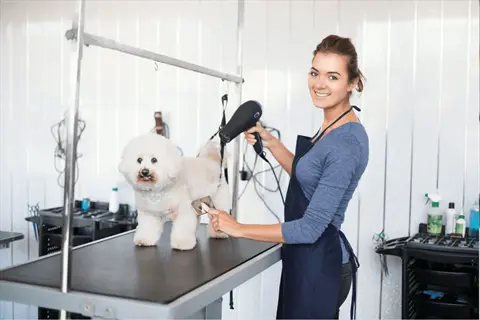
Desensitization Tapes
- Materials: Record clipper/dryer sounds at 3 intensity levels using phone
- Application: Play low volume during meals, gradually increasing over 2 weeks
- Benefits: Conditions positive association with grooming equipment noises
- Schedule: 5-minute sessions daily with high-value treats as rewards
- Caution: Stop immediately if pet shows fear responses like hiding
- Cost Analysis: Free versus $30 professional desensitization programs
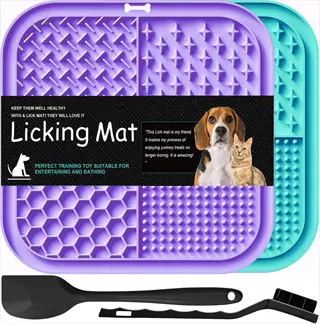
Frozen Lick Mats
- Formula: Spread Greek yogurt mixed with peanut butter onto silicone mat
- Application: Freeze solid and offer during nail trims or face grooming
- Benefits: Provides distraction through licking which naturally calms dogs
- Duration: Lasts 15-20 minutes depending on thickness and temperature
- Caution: Use xylitol-free peanut butter and limit dairy for sensitive pets
- Cost Analysis: $1 per use versus $8 pre-made calming distraction toys
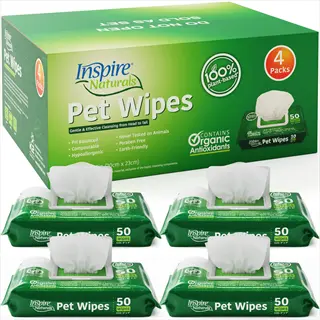
Herbal Grooming Wipes
- Formula: Brew chamomile and valerian root tea, soak reusable cloths
- Application: Wipe paws and face before grooming session starts
- Benefits: Topical absorption of calming herbs through skin contact
- Storage: Refrigerate in airtight container and use within 1 week
- Caution: Avoid for pregnant/nursing pets without veterinary approval
- Cost Analysis: $0.15 per wipe versus $25 for 100 commercial wipes

Weighted Blanket Pad
- Materials: Fabric pouch filled with poly pellets equivalent to 10% body weight
- Application: Place across hindquarters during grooming table sessions
- Benefits: Deep pressure therapy reduces motion and anxiety struggles
- Design: Ensure easy removal strap for quick release if needed
- Caution: Never leave unattended and monitor for overheating signs
- Cost Analysis: $20 homemade versus $85 therapeutic pet blankets
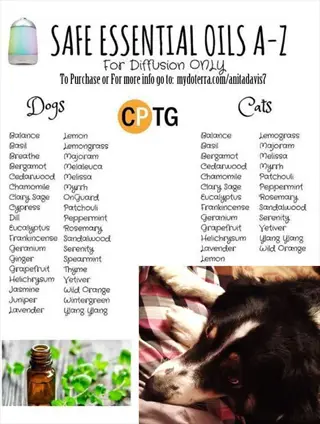
Aromatherapy Diffuser
- Formula: 5 drops bergamot + 3 drops frankincense in water-based diffuser
- Application: Run in grooming area 30 minutes before pet arrival
- Benefits: Creates calming environment through olfactory stimulation
- Ventilation: Maintain airflow with cracked window during operation
- Caution: Avoid tea tree/eucalyptus oils which are toxic to pets
- Cost Analysis: $1 per session versus $40 plug-in commercial alternatives
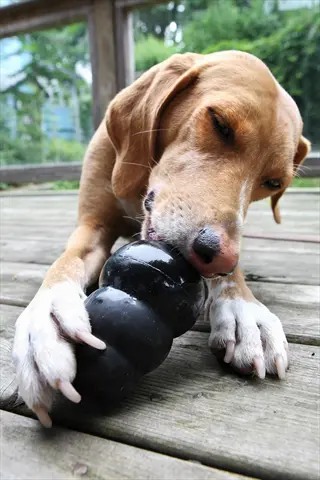
Tension Release Toys
- Materials: Rubber Kong filled with frozen bone broth and kibble
- Application: Offer during potentially stressful procedures like ear cleaning
- Benefits: Redirects nervous energy through chewing satisfaction
- Preparation: Freeze overnight for extended engagement duration
- Caution: Size appropriately to prevent choking hazards
- Cost Analysis: $3 per toy versus $15 pre-filled calming chew toys
Tool Maintenance Guide
Stay on tight routines to keep tools operating in a safe manner. Clean clipper blades daily with alcohol pads. Oil scissors weekly, applying oil to the pivot point. Perform deep cleaning monthly, soaking parts in disinfectant fluid. Metric users: 5 ml oil per application equals one teaspoon.
The first principle is safety involving the use of blades, chemicals, and the tools that utilize them. Cut-resistant gloves should be worn when using blades. Work with chemical cleaners and other hazardous materials in well-ventilated areas. Keep any solutions used in labeled containers out of reach of any animals. This will help prevent accidents, ensuring the safety of everybody.
Professional sharpening may cost between $5 and $8 per scissor guaranteeing factory precision. DIY honing involves $15 for ceramic rods to hone yourself. Compare cost savings: pro service every six months v. monthly at home honing. Quality tools necessitate professional maintenance for longevity.
Increase the longevity of the tools you use with a few easy-to-follow practices. Wipe down the grooming tables daily with mild soap. Check the hydraulic fluid level every month and fill only to the 250 ml mark. Replace any worn parts as soon as possible to prevent breakdowns or service interruptions during grooming appointments.
Clipper Deep Cleaning
- Step 1: Remove blade and brush loose fur with small brush
- Step 2: Soak blade in clipper wash solution for 5 minutes
- Step 3: Scrub with soft toothbrush and rinse under warm water
- Step 4: Dry completely with compressed air or lint-free cloth
- Step 5: Apply 2 drops clipper oil to blade teeth and moving parts
- Step 6: Reattach blade and run clipper for 30 seconds to distribute oil
Scissor Sharpening
- Professional Service: $5-8 per scissor - Delivers factory edge precision
- DIY Honing: Use ceramic rod at 20° angle with light strokes (10 per side)
- Testing Sharpness: Should cleanly cut tissue paper or single hair strand
- Storage: Always keep in protective case with silica gel moisture absorber
- Warning: Never use on wire or matted fur - Causes micro-chips in blade
Brush Sanitization
- Solution: 1:10 bleach-water or veterinary disinfectant per label
- Process: Soak 15 minutes, rinse until water runs clear (5-7 cycles)
- Drying: Air-dry upside down on rack - Never use heat over 50°C (122°F)
- Natural Alternative: White vinegar soak (1:3 vinegar-water for 30 minutes)
- Bristle Care: Use comb to straighten bent bristles while still damp
- Replacement Signs: More than 20% bristle damage or plastic cracking
Table Maintenance
- Hydraulic Systems: Check fluid level monthly - Top up with ISO 32 viscosity grade hydraulic oil
- Lubrication Points: Apply silicone spray to joints and moving parts weekly
- Strap Inspection: Check for fraying - Replace if more than 10% threads damaged
- Non-Slip Surface: Clean with mild soap - Recoat with rubber renew solution quarterly
- Mobile Units: Check wheel locks and brake function before each transport
- Safety: Test emergency release mechanism monthly with dummy weight
Dryer Care
- Filter Cleaning: Wash HEPA filters weekly - Replace every 3 months
- Motor Care: Vacuum intake vents daily to prevent overheating
- Cord Inspection: Check for fraying - Replace if copper visible
- Nozzle Care: Remove hair buildup with pipe cleaner after each use
- Storage: Coil cords properly - Never wrap tightly around unit
- Professional Service: Annual motor inspection recommended
Choosing Tools for Coat Types
Double-coated breeds, such as Huskies, require specialized equipment. Use a 7F blade, leaving a coat length of 3mm for good insulation. Undercoat rakes with a 2cm distance will avoid damaging the guard hairs. Metric equivalent: to 1/8 inch is 3mm. Do not shave below 6mm to ensure temperature regulation.
Curly coats necessitate using #30 blades, shears that curve, for sanitary areas. When using curved shears, use the 7.5-inch shears when trimming body contours. Use fine-toothed combs to prevent matting behind the ears. Make sure to test your tools on a small patch to check for skin reactions.
Wiry terrier coats require the use of stripping knives and rubber brushes for grooming. Every six to eight weeks, the coat should be hand-stripped to maintain its texture. Face trims should be done with #10 blades. These can be blended in with 13mm guard combs. Never should wiry coats be shaved, or the coat will lose its protective properties.
Rubber curry brushes and chamois cloths provide a shine for smooth coats. Use circular motions to lift dirt without scratches. Use the 5F blades, which will leave a length of 6mm. For sensitive/ delicate groin areas, rounded-tip scissors will allow for trimming without accidental nicks.
Double-Coated Breeds
- Undercoat Rake: Use with grain growth direction in 2-inch (5 cm) sections
- High-Velocity Dryer: Keep nozzle 12 inches (30 cm) away, Use pulsating setting
- Slicker Brush: Gentle circular motions on legs and tail, Avoid direct skin contact
- Blade Selection: 7°F blade leaves 1/8 inch (3 mm) length, Use guard comb for uniformity
- Caution: Never shave below 1/4 inch (6 mm) to protect temperature regulation
- Special Tip: Work in layers during shedding season using line-brushing method
Curly Coats
- Dematting Comb: Start at tips, Hold hair base to prevent pulling
- Curved Shears: 7.5-inch length for body contours, 30° angle for round shapes
- Clipper Technique: #30 blade against growth direction for sanitary areas
- Conditioner Use: Apply detangler before brushing, Rinse thoroughly after bathing
- Drying: Airflow dryer with diffuser attachment on low heat 40°C (104°F)
- Caution: Check between paw pads daily for matting and debris accumulation
Wiry Coats
- Stripping Technique: Pull small tufts in growth direction using thumb guard
- Carding Tool: Remove dead undercoat without damaging topcoat
- Thinning Shears: Texturize head furnishings, Blend transitions
- Rubber Brush: Use damp for show preparation, Dry for daily maintenance
- Face Trimming: Use #10 blade for clean cheeks, Blend with 1/2 inch (13 mm) comb
- Caution: Hand-stripping requires training to avoid skin irritation
Smooth Coats
- Rubber Curry Brush: Circular motions during bath to lift dirt
- Hound Glove (Leather Grooming Mitt): Final polish in direction of hair growth
- Blade Selection: 5°F blade for body leaves 1/4 inch (6 mm) length
- Chamois Cloth: Buff after drying for shine enhancement
- Sensitive Areas: Use rounded-tip scissors for armpits and groin
- Caution: Avoid stiff bristles that can scratch delicate skin
Long-Haired Breeds
- Pin Brush: Section coat, Start at ends working upward to roots
- Mat Splitter: Slide vertically through mats, Never cut horizontally
- Shear Technique: Point-cutting for feathering, Blunt cut for hygiene areas
- Comb Use: Fine-tooth for face, Wide-tooth for body and tail
- Detangling: Apply conditioner-water mix (1:4 ratio), Use wide-tooth comb
- Caution: Check for matting behind ears and under collar daily
10 Must-Have Pet Grooming Tools
Professional-style clippers are used for body trimming with different interchangeable blades, such as #10 for close cutting. The entry price for this type of clipper is $40-60, while the professional model generally runs $150+. Safety features offered are an automatic shut-off at 70°C (158°F) to prevent burning. Cordless designs offer different adjustable speeds, allowing easy maneuverability.
Curved shears mold body curves in 7.5-inch (19cm.) lengths. Rounded tips help avoid accidental pokes. Pro stainless steel models ($80 and up) hold a sharp edge longer than the $20 entry versions. Ergonomics cuts down wrist strain during long sessions around delicate areas.
Slicker brushes have angled pins at 15 degrees for raising undercoat in safety. The fine 0.8mm pins are for faces and the 1.2mm pins for bodies. The higher range brushes have a cushion inside the brush to prevent irritation. The entry brushes do not have this and can cause scratches.
High-velocity dryers require adjustable heat settings in the range of 30-50°C (86-122°F). Professional models also have cool shot buttons that enable users to prevent overheating. Concentrator nozzles direct airflow safely 12 inches (30cm) away from the skin. Budget-friendly units do not include temperature control features, which could lead to burns.
Professional Clippers
- Blade Systems: Detachable #10 #30 #40 blades for different coat lengths
- Motor Types: Rotary motors for heavy-duty use pivot motors for precision
- Speed Settings: Variable 3000-4500 SPM with quiet operation below 60 dB
- Ergonomics: Anti-vibration handles reduce fatigue during extended sessions
- Maintenance: Self-sharpening blades require oiling after each use
- Safety Features: Automatic shutoff at 70°C (158°F) to prevent burns
Curved Shears
- Length Options: 6.5-inch for detail work 8-inch for body contouring
- Edge Types: Convex edge for smooth cuts serrated edge for wet hair
- Handle Designs: Offset handles reduce wrist strain ideal for left/right hand use
- Materials: Japanese stainless steel holds edge through 500+ sharpening cycles
- Cutting Angles: 30°-45° blade angle for precision shaping
- Special Features: Finger rest for control during intricate trimming
Thinning Shears
- Tooth Density: 20-40 teeth for gradual thinning or bulk removal
- Blade Configuration: Chisel-edge teeth remove 50% hair per cut
- Weight Balance: Counterweight system prevents hand fatigue
- Applications: Blending coat transitions reducing bulk without lines
- Safety: Rounded tips prevent accidental skin puncture
- Maintenance: Monthly honing maintains tooth alignment
Slicker Brush
- Bristle Types: Fine 0.8mm pins for detangling medium 1.2mm for undercoat
- Pin Angle: 15° angled pins lift undercoat without scratching skin
- Handle Design: Non-slip grip with wrist support strap
- Coat Applications: Penetrates topcoat to remove loose undercoat
- Safety Features: Polished pin tips with protective coating
- Size Variations: Small (4x6-inch) for faces large (6x8-inch) for bodies
Undercoat Rake
- Tooth Design: Rotating stainless steel teeth prevent pulling
- Tooth Spacing: 1 cm gaps for medium coats 2 cm for thick coats
- Safety: Rounded tooth tips with protective coating
- Technique: Use in coat direction with gentle pressure
- Applications: Removes 90% dead undercoat in single pass
- Handle: Ergonomic non-slip grip with shock absorption
Nail Clippers
- Types: Guillotine-style for small pets scissor-style for large breeds
- Safety Features: Quick sensor window safety guard positioning
- Blade Material: Surgical-grade stainless steel for clean cuts
- Sizes: Small (for cats/toy breeds) medium (15-50 lb) large (50+ lb)
- Accessories: Included nail file with 2 grit surfaces
- Special Designs: LED light models for dark-colored nails
High-Velocity Dryer
- Power: 4HP motor with 35,000 FPM airflow
- Heat Settings: Adjustable 30-50°C (86-122°F) with cool shot button
- Nozzles: Concentrator for de-shedding diffuser for curly coats
- Noise Level: <70 dB models available for noise-sensitive pets
- Safety: Automatic thermal cutoff grounded plugs
- Portability: Lightweight models under 8 lbs for mobile groomers
Dematting Comb
- Blade Type: Stainless steel with micro-serrated edge
- Safety: Rounded tip with skin guard prevents cuts
- Technique: Work vertically through mats from tip to root
- Handle: Non-slip rubber grip with thumb rest
- Sizes: 3-inch blade for small mats 6-inch for large tangles
- Applications: Safely removes mats without shaving
Ear Cleaning Solution
- Formulation: pH-balanced 6.2 (slightly acidic for pet safety) alcohol-free with aloe vera
- Application: 5-10 drops per ear with massage technique
- Safety: Veterinary-tested non-irritating formula
- Active Ingredients: Ketoconazole for yeast hydrocortisone for inflammation
- Packaging: Squeeze bottle with extended nozzle for precision
- Storage: Shelf-stable for 24 months unopened
Grooming Table
- Height Adjustment: Hydraulic lift 28-42 inches (71-107 cm)
- Surface: Non-slip rubber matting with drainage holes
- Stability: Steel frame with 200 lb (90 kg) capacity
- Accessories: Adjustable grooming arm noose system
- Portable Models: Foldable designs under 15 lbs (6.8 kg)
- Safety: Locking casters emergency release mechanism
5 Common Myths
Pet-safe shampoo is human shampoo because our skin is similar
The pH of human shampoo is inappropriate for animals and has a pH of about 5.5-6.5 while the necessar y skin pH of the animal is about 6.2-7.4. Phospholipid and non-fatty acid covers of the skin are lost to soaps and human cleansers. The skin becomes dry and irritated, thus leading to a greater susceptibility to parasite and bacterial infection. Veterinary formulated shampoos are always recomended which have the proper pH, suitable for dogs or cats skin biology.
Cage dryers are perfectly safe for dogs if monitored throughout grooming
Cage dryers can pose serious hazards, including heat stroke, even when monitored. Internal temperatures of up to 65ºC (149F) can be reached in seconds. These in-cages do not allow correct heating dissipation, causing stressed animals to easily overheat and pant excessively without the cooling factor. Professional groomers utilize dryers that are adjustable in temperature and directed from an adequate safe distance to provide adequate ventilation and controlled heat during the drying process.
Scissors never lose sharpness. They need no maintenance.
All hair cutting scissors grow dull slowly from usage. They require professional sharpening once in three to six months depending on the amount used. Dull blades cause tugging at the hair, uneven cuts and splits in the ends of the hair which produce poor coat health. All honing with ceramic rods gets the hair cutting straightened out between sharpenings, causing the hair cutter to make a clean cut which is conducive to health of the coat in less time for the hair cutter.
Puppy coats do not require any brushing until they develop adult hair
Regularly brushing from 8 weeks of age establishes a habit of good grooming with the puppy and prevents matting of the plush puppy undercoat. Brief gentle daily brushing with a soft slicker brush distributes the normal oils, gives exercise to the skin for a more healthy condition and accustoms the puppy in its early stages to handling procedures. This early handling of the puppy prevents future anxiety when grooming and establishes its lifelong system for coat care which is especially important in the case of the long-haired breeds.
Higher-cost grooming tools guarantee high quality and performance
The tool quality is a factor of the materials and workmanship that are used and not of the price. Professional quality stainless steel blades for $25 will outlast the $100 blades if they are properly maintained. Look at quality of blade sharpness, whether the tool is ergonomically designed, what coverage is included in the warranty and not simply the price. Tools sold in the middle price range from responsible manufacturers will often be the best value for the performance in either home or professional grooming.
Conclusion
Selecting the appropriate pet grooming tools is a direct benefit to your pet's comfort during the process. The correct tools cut down on time spent grooming, as well as the possible irritation to the skin. I have seen timid pets relax completely from the mellow, selected brushes and quiet clippers that were selected. Your friend deserves the stress-free treatment that their grooming entails, to keep them happy.
Cut costs with cost-effective alternatives and care routines. Starter kits are an automatic savings practice over buying tools one at a time. Regularly oiling the blades extends clipper life, saving replacement costs. Do-it-yourself alternatives, such as cleaning with vinegar, save even more. Wise measures help you save for the budget without sacrificing results.
Safety should dictate each grooming decision you make. Choose brushes or combs with non-slip handles and rounded tips. Don't use cage dryers, which can cause heat stroke. Use homemade products first on small patches of skin. The safety of your pet is of much greater importance than the time or money you can save by grooming.
Implement these recommendations gradually. Start with two of the basic tools that are appropriate for your pet's coat. Add in these special tools every month as the skills develop. Personalize the techniques/systems to the specific needs of your pet. Continuous small improvement will result in professional results at home.
External Sources
Frequently Asked Questions
What essential pet grooming tools do professionals recommend?
Professional groomers require 10 essential tools: clippers for trimming, curved shears for contouring, thinning shears for blending, slicker brushes for detangling, undercoat rakes, nail clippers, high-velocity dryers, dematting combs, ear cleaning solutions, and sturdy grooming tables. These ensure efficient, safe handling of all coat types and procedures.
How often should pet grooming tools be maintained?
Maintenance frequency varies by tool: clipper blades need oiling after each use with deep cleaning monthly. Scissors require weekly pivot oiling and monthly honing. Brushes need disinfecting weekly, while grooming tables need joint lubrication every week and hydraulic checks monthly. Consistent care prevents equipment failure and ensures pet safety.
Can human shampoo be used on pets?
Human shampoo is unsafe for pets due to incompatible pH levels. Pet skin requires neutral 6.2-7.4 pH formulas, while human shampoos (pH 5.5-6.5) strip protective oils causing dryness and irritation. Always use veterinary-formulated shampoos containing soothing ingredients like aloe vera to maintain healthy skin and coats.
What are effective DIY alternatives to commercial grooming products?
Safe, budget-friendly DIY solutions include:
- Lavender spray: 10 drops oil + 1 cup water for calming
- Vinegar ear cleaner: 1:3 vinegar-water ratio for pH balance
- Oatmeal bath: Ground oats in warm water to soothe skin
- Coconut oil detangler: 2 tbsp oil + 1 cup water spray
How do I choose tools for different pet coat types?
Select tools based on specific coat needs:
- Double coats: Undercoat rakes and high-velocity dryers
- Curly coats: Dematting combs and curved shears
- Wiry coats: Stripping knives and rubber brushes
- Smooth coats: Hound gloves and chamois cloths
- Long coats: Mat splitters and pin brushes
Are expensive grooming tools always better?
Price doesn't guarantee quality. Mid-range professional tools often outperform luxury brands when properly maintained. Prioritize features like ergonomic handles, sharpness retention, and safety certifications over cost. For example, surgical-grade stainless steel blades at moderate prices provide superior durability and performance compared to overpriced alternatives.
What safety risks do cage dryers pose?
Cage dryers create dangerous heat environments exceeding safe temperatures rapidly, risking heatstroke even with supervision. Enclosed spaces prevent adequate airflow, causing respiratory distress. Professionals use stand dryers with adjustable nozzles maintaining safe distances and temperatures below 40°C (104°F) for controlled, ventilated drying.
When should puppy grooming begin?
Start grooming puppies at 8 weeks using gentle techniques:
- Introduce soft slicker brushes for 5-minute sessions
- Practice nail trimming with guillotine-style clippers
- Use diluted shampoos during monthly baths
- Acclimate to dryer sounds at low volumes
How do professionals calm anxious pets during grooming?
Effective calming methods include:
- Pheromone sprays applied 30 minutes pre-session
- Anxiety wraps applying gentle pressure
- Lick mats with frozen treats for distraction
- Desensitization to clipper sounds over 2 weeks
- Aromatherapy diffusers with pet-safe essential oils
What are common grooming myths professionals debunk?
Top debunked myths include:
- Human shampoo safety: False - causes skin damage
- Cage dryer safety: False - risks heatstroke
- Puppies needing no grooming: False - start early
- Scissors never dulling: False - sharpen regularly
- Price indicating quality: False - evaluate features
